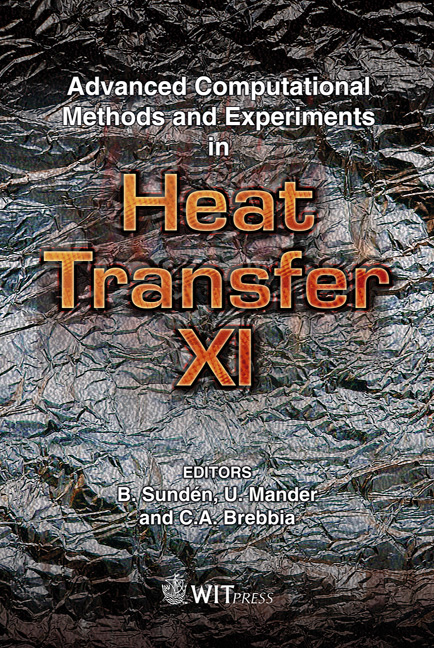Computational Model For Particle Deposition In Turbulent Gas Flows For CFD Codes
Price
Free (open access)
Transaction
Volume
68
Pages
9
Page Range
135 - 143
Published
2010
Size
1,953 kb
Paper DOI
10.2495/HT100121
Copyright
WIT Press
Author(s)
M. C. Paz, J. Porteiro, A. Eirís & E. Suárez
Abstract
A numerical simulation procedure was developed in FLUENT code in order to study particle deposition in diluted turbulent gas flows in ducts. A hybrid Eulerian–Lagrangian model was used to evaluate the gas flow and temperature profile as well as particle dispersion and deposition. The mean flow velocity and temperature fields were generated by a Reynolds Average Navier Stokes (RANS) method, using the Reynolds Stress Model (RSM) available in FLUENT. The instantaneous turbulent velocity fluctuation and Brownian force were simulated by a continuous Gaussian random field as a white-noise process respectively. In the particle equation of motion, Brownian diffusion, Saffman lift, Stokes drag and gravity were included. In order to evaluate the deposition model, particles with diameter ranges from 1nm to 50 μm, and different velocity fields were studied. The numerical results obtained under isothermal conditions were compared with the available experimental data, with empirical correlations, and earlier published simulation results. In all cases, an acceptable agreement was observed. The importance of each of the deposition forces included is discussed in this work. The reasonable computational cost of this methodology enables us to study particle deposition in complex geometries, different from smooth surfaces. The results presented provide guidelines to develop an extended computational fouling model in heat exchange surfaces. Keywords: particles deposition, exhaust gas, fouling, CFD. 1 Introduction Particle deposition is of critical importance in numerous industrial applications, filtration, microchip manufacture, atmospheric pollutant control, combustion and
Keywords
particles deposition, exhaust gas, fouling, CFD





